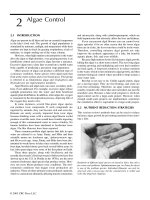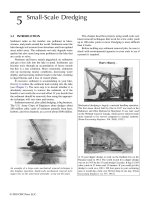Business and society ethics sustainability and stakeholder management 9e chapter 17
Bạn đang xem bản rút gọn của tài liệu. Xem và tải ngay bản đầy đủ của tài liệu tại đây (1.4 MB, 30 trang )
© 2015 Cengage Learning
1
Chapter 17
Employee
Stakeholders
and Workplace
Issues
© 2015 Cengage Learning
2
Learning Outcomes
1. Identify the major challenges occurring in the workforce
today.
2. Outline the characteristics of the new social contract
between employers and employees.
3. Explain the employee rights movement and its underlying
principles.
4. Describe and discuss the employment-at-will doctrine and
its role in the employee rights.
5. Discuss the right to due process and fair treatment.
6. Describe the actions companies are taking to make the
workplace friendlier.
7. Elaborate on the freedom-of-speech issue and whistleblowing.
© 2015 Cengage Learning
3
Chapter Outline
• The New Social Contract
• The Employee Rights Movement
• The Right Not to Be Fired Without Cause
• The Right to Due Process and Fair Treatment
• Freedom of Speech in the Workplace
• Summary
• Key Terms
© 2015 Cengage Learning
4
Employee Stakeholders
and Workplace Issues
• The social contract between organizations
and workers continues to evolve, and is
different from contracts of the past.
• Three employee rights issues• Right not to be fired without good cause
• Right to due process and fair treatment
• Right to freedom of speech in the
workplace
© 2015 Cengage Learning
5
The New Social Contract
• Today’s worker has held 11.3 jobs on
average. All realize their jobs are vulnerable,
and they receive a smaller portion of the
economic pie.
• They are more mobile, less loyal, and more
diverse.
• They seek:
•
Competitive pay
•
Benefits
•
Opportunities for professional growth
© 2015 Cengage Learning
6
The Changing Social Contract
© 2015 Cengage Learning
7
The Employee Rights Movement
• Public sector employees have constitutional
protections. We focus on employees in the
private sector, not subject to constitutional
control because of the concept of private
property.
•
Individuals and private organizations are free
to use their property as they desire.
• Although labor unions have been successful
in improving pay, benefits and working
conditions, they have not been as active in
pursuing civil liberties.
© 2015 Cengage Learning
8
The Meaning of Employee Rights
• We approach the topic from the perspective
of the Principle of Rights, justifiable claims
that utility cannot override.
• We will also cover legal rights.
Sources of employee rights -
1. Statutory rights
2. Collective bargaining rights
3. Enterprise rights
© 2015 Cengage Learning
9
3 Models of Management Morality
Moral management •Employees are viewed as a human resource
that must be treated with dignity and respect.
Amoral management •Employees are treated as the law requires.
Immoral management •Employees are viewed as factors of
production to be used, exploited,
and manipulated.
© 2015 Cengage Learning
10
The Right Not to Be Fired
Without Cause
Good cause norm -
•The belief that employees should only be
discharged for good reasons.
•This belief prevails in the United States today,
though it conflicts with reality.
Employment-at-will doctrine -
•The reality is that the relationship between
employer and employee is voluntary and can be
terminated at any time by either party.
•The central issue is changing views of the
employment at will doctrine.
© 2015 Cengage Learning
11
Legal Challenges
to Employment-at-Will
Public policy exceptions•Protects employees from being fired for refusal to
commit crimes or for utilizing legal rights.
Implied contract exception•Protects employees who they believe have
contracts or implied contracts.
Good faith principle•Employers may lose lawsuits to former employees
if they cannot show that employees had
opportunities to improve their performance before
termination.
© 2015 Cengage Learning
12
Moral and Managerial Objections to
Employment-at-Will
1. Employees deserve respectful treatment.
2. Employees do not have the option of being
arbitrary or capricious with employers.
Employers should bear the same
responsibility.
3. Employees are expected to be trustworthy,
loyal and respectful with employers.
Employers should show employees the same
consideration.
© 2015 Cengage Learning
13
Dismissing an Employee With Care
1. Fire employees in a private space.
2. Be mindful of employees’ logistics.
3. Preserve the employee’s dignity.
4. Choreograph the notification in advance.
5. Use transparent criteria for layoffs.
© 2015 Cengage Learning
14
What NOT to do
When Terminating an Employee
1. Don’t fire on a Friday.
2. Don’t say that downsizing is finished.
3. Don’t terminate an employee via e-mail.
4. Stick to the topic and avoid platitudes.
5. Don’t rush through the meeting.
© 2015 Cengage Learning
15
The Right to Due Process
and Fair Treatment
Due Process •The right to receive an impartial review of one’s
complaints and to be dealt with fairly.
•The right of employees to have decisions that
adversely affect them be reviewed by objective
and impartial third parties.
© 2015 Cengage Learning
16
The Requirements of a
Due Process System
1.
It must be a procedure; it must follow rules; it
must not be arbitrary.
2.
It must be visible and well-known so that
potential violators and victims are aware of it.
3.
It must be predictably effective.
4.
It must be institutionalized – a relatively
permanent fixture in the organization.
5.
It must be perceived as equitable.
6.
It must be easy to use.
7.
It must apply to all employees.
© 2015 Cengage Learning
17
Alternative Dispute Resolution
© 2015 Cengage Learning
18
Concerns with the Open-Door Policy •
The process is closed.
•
One person is reviewing what happened.
•
There is a tendency for a manager to
support another manager’s decision.
•
A hearing procedure helps open up the
process because employees can elect
representation.
© 2015 Cengage Learning
19
The Ombudsman
•
An ombudsman is neutral and promises
confidentiality.
•
An ombudsman can handle employee
concerns in a way that keeps the problem
from getting out of hand.
•
The procedure has been used in Sweden
since 1809 to curb abuses by government
against individuals.
© 2015 Cengage Learning
20
Factors for a Successful
Peer Review Panel
1.
Be sure that people involved in the process
are respected members of the organization.
2.
Committee members should be elected rather
than appointed.
3.
They must receive training in dispute
resolution, discrimination, fairness, legalities,
and ethics for everyone involved.
4.
Representatives of both employees and
management should be involved in decision
making.
© 2015 Cengage Learning
21
The Future of ADR
• The use of ADR is growing because of
time and cost savings over litigation.
• But some employers require new hires to
sign contracts waiving their right to sue
their employer in favor of mandatory
arbitration.
Arbitration •
A neutral party resolves a dispute between two
or more parties and the resolution is binding.
Mandatory arbitration
•
The parties must agree to arbitration prior to
any dispute occurring, and be bound.
© 2015 Cengage Learning
22
Freedom of Speech in the Workplace
• While the U.S. Constitution protects an
individual's speech from government
interference, this does not apply to an
employer, and some forbid conflicting political
views.
Whistle-Blower • An organization member who discloses illegal,
immoral, or illegitimate practices under the
control of their employers, to persons or
organizations that may be able to effect
action.
© 2015 Cengage Learning
23
Whistle-Blowing
Key Elements in the Process -
1.The whistle-blower
2.The act or complaint
3.The party to whom the complaint is made
4.The organization against which the complaint is
made
© 2015 Cengage Learning
24
Two Views of Employee Responsibility in a
Whistle-Blowing Situation
Traditional
Corporate
Employer
Employee
Loyalty
Obedience
Confidentiality
Emerging
Corporate
Employer
(Has certain
rights)
Responsibility
Responsibility
Employee
(Has certain
rights)
Public
(Has certain
rights)
Whistle blowing
© 2015 Cengage Learning
25









